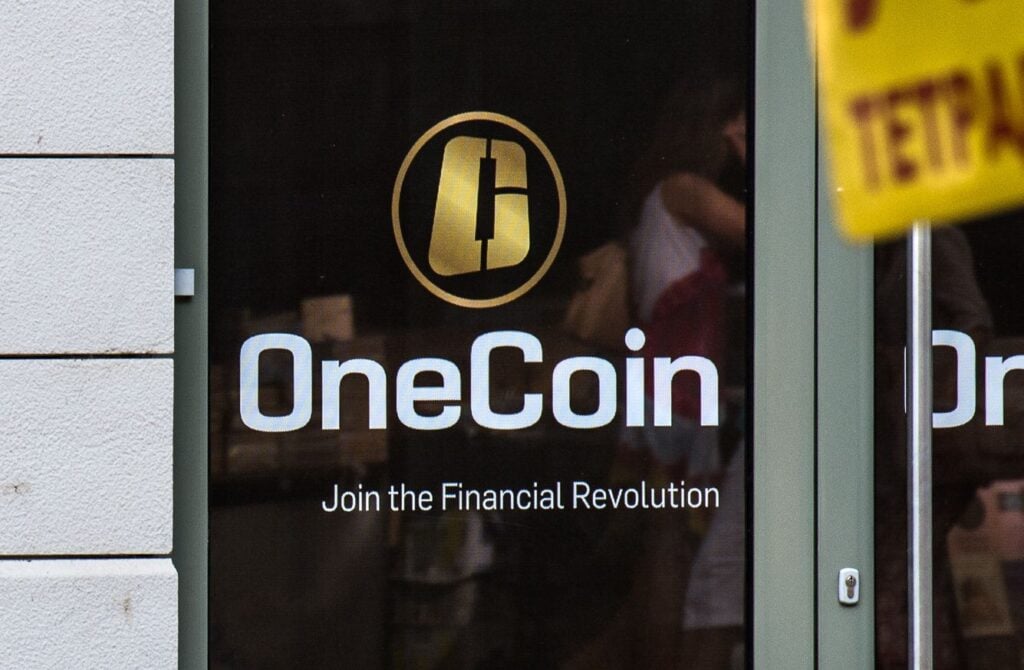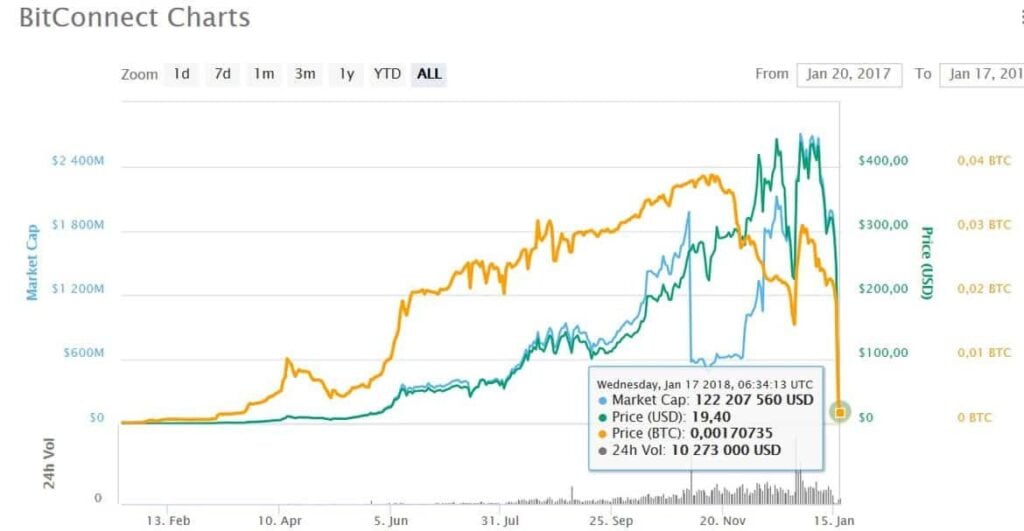How do Ponzi schemes affect the crypto industry?

Bitcoin is still associated with a pyramid scheme for many people who are not familiar with the crypto industry. They are scared of the high returns as a consequence of a rapid Bitcoin price growth. However, BTC itself is not a pyramid, but this does not mean that there are none in the cryptosphere. Unfortunately, such fraudulent schemes are quite widespread. Today we will discuss how you can recognize a crypto pyramid and review the stories of the most popular Ponzi schemes in the history of Bitcoin.
How are pyramid schemes built?
The prototype of most financial pyramid schemes of today was the so-called Ponzi scheme, a scam by Italian-born American Charles Ponzi. In 1919 he registered the Securities Exchange Company, which issued promissory notes to its clients against various amounts. Ponzi promised to pay each shareholder of the company $500 profit for each $1,000 invested. Because of very attractive conditions investing in the company quickly gained popularity among Americans.
However, in the summer of 1920, the fraudulent Ponzi scheme collapsed. All happened as a result of a lawsuit from one of the investors, who demanded from the company 50 percent of his profits. Under the law of the time, such a claim allowed the funds of the company’s founder to be frozen in bank accounts. Charles Ponzi was forced to suspend payments to depositors, and they rushed en masse to withdraw their money. A little later the fact of fraud was quickly exposed – the “profitability” of the debt securities was generated from the funds of new depositors. As soon as their flow dried up, the pyramid company immediately collapsed.
Let’s define the main features of a financial pyramid. Any pyramid scheme is based on the payment of interest to early depositors by attracting new users and investments. Up to a certain point each level of people attracted to the pyramid receives a profit, but in the end the creators of the Ponzi scheme cannot pay back debts to absolutely all participants. Most often this moment does not even come – the fraudsters run with the accumulated money of their depositors.
Other features of financial pyramid schemes include the following:
- Lack of transparency. Pyramid depositors often do not understand how profits are generated from their investments. The creators of a Ponzi scheme sometimes disguise completely ridiculous mechanisms as their “ingenious” investment earnings;
- Income Guarantee. No traditional investment fund offers a 100% guarantee of income for its clients. But a pyramid scheme can promise to pay out money in any case;
- An aggressive marketing campaign. Information about pyramids can be found everywhere where advertising is available – social networks, video hostings, messenger channels, and so on. The main task of the creators of the fraud scheme is to attract as many gullible victims as possible;
- No contract is signed with clients. In the sphere of traditional finance, a contract is sometimes signed, but the victim is usually offered a document without any legal validity under the guise of a document;
- Absence of statutory documents, financial statements, licenses, and other information which may help identify the real identity of the pyramid founders.
In general, the schemes of any Ponzi are relatively simple, but they keep attracting to themselves a huge number of investors both in the crypto industry and outside of it. There are many reasons for this phenomenon, from the ordinary lack of financial literacy to the banal excitement. The most large-scale scheme of this type is considered to be the Bernard Madoff scam. According to various estimates, he managed to embezzle about 50 billion dollars. His pyramid scheme in the form of an investment company existed for decades before its closure, and Madoff himself was able to defraud many famous Wall Street investors.
Cryptocurrencies and Ponzis
With the advent of Bitcoin, blockchain, and a huge number of altcoins, scammers got a new, convenient, and very profitable tool to find their victims. Now financial pyramids are called “high-yield investment instruments,” and their returns are generated by investing in “innovative cryptocurrency projects”.
The main advantages of crypto for fraudsters are decentralization and anonymity. A usual pyramid scheme has to be registered first as a legal company, then to open a bank account to raise funds and spend money to start a marketing campaign. All this time the pyramid creators need to be very careful, as law enforcement can easily close their accounts and arrest them themselves.
In the case of cryptocurrency, all of these processes are transferred to the digital field. You don’t need to form a company to raise funds, you just need to start a startup. Because of the hype around Bitcoin’s recent rise in price, many investors are willing to invest in new startups, even if they are completely opaque. Thus, the fact that there is hype around the crypto industry contributes to the growth of fraud. Its scale over the past few years has reached notable peaks – some cryptocurrency Ponzi schemes reach a turnover of billions of dollars.
The creation of such a huge number of cryptocurrency financial pyramids is due to the low level of financial literacy of the population, which is used by fraudsters. The organizers of such schemes focus on the fact that many inexperienced users in search of “Bitcoin 2.0” will be ready to bring their funds to their project in an effort to get rich quickly.
The biggest cryptocurrency pyramids
Below we take a look at the biggest cryptocurrency fraud schemes that used a pyramid scheme structure. Let’s note that this is a relatively small part of the criminal ways in which the perpetrators “force” their victims to get rid of money.
OneCoin
OneCoin is considered to be one of the largest financial pyramid schemes not only by the standards of the cryptocurrency industry but also in traditional finance. The project was founded by Ruja Ignatova in 2014. For almost three years of its existence, OneCoin has attracted more than 3 million investors worldwide. The amount of their investments exceeded 4 billion euros, and this is only by the most optimistic projections. Some analysts believe the fraudsters managed to steal more than 15 billion euros.
The pyramid worked on the principle of network marketing. Its participants received various bonuses for attraction of new investors. They also benefited from new investors, and the pyramid stretched over dozens of levels. According to Ruzha Ignatova, the “cryptocurrency queen,” OneCoin was supposed to be the “Bitcoin killer. In a few weeks, the coin would supposedly become the main payment medium around the world.
The coin was as centralized as possible. It could only be exchanged through sites controlled by the pyramid. The creators of the scheme had a database with information about each depositor. In fact, investors exchanged useless tokens, which couldn’t even be mined – the entire volume of the emission was made by the company One Coin Limited itself.
The first rudiments of the fight against the pyramid appeared in September 2015. At that time, the Bulgarian Financial Supervision Commission published a special report on OneCoin. It noted the high risk of investments in the project and the fact that the scheme itself is absolutely not transparent. Apparently, this publication had an effect on the fraudsters and they stopped working in Bulgaria, closing all their accounts in local banks.
In 2017, the Bank of Thailand and the Austrian Financial Markets Authority issued harsher rhetoric against Onecoin. At the same time, Italy’s financial regulator banned all activities with OneCoin cryptocurrency. In Germany, financial regulators ordered to freeze 29 million euros in the accounts of fraudsters in European banks.
In the same year, a large conference of OneCoin investors was to be held with the participation of management and Ignatova herself. However, the “cryptocurrency queen” did not attend the event and has been missing ever since. However, law enforcement authorities did manage to detain other known pyramid leaders, including lawyer Mark Scott, businessman Sebastian Green, and Konstantin Ignatov.
BitConnect
The second largest and most famous crypto pyramid was founded in 2016 by an unknown team. Among them was Satao Nakamoto, who offered to buy the BCC project’s native tokens. The tokens were blocked on the startup’s platform for a certain period of time. The same platform allegedly had a trading bot that generated profits and paid them out to investors.
The promises for depositors were very attractive – at least 40 percent income per month from investments, which were blocked on the platform for 299 days. For those who wished to invest especially large sums, there was a mechanism to unblock investments in a shorter period with an additional bonus in the form of interest, which was accrued every day.
One of the first to come forward with the real intentions of the scammers was the co-founder of the most popular altcoin Ethereum, Vitalik Buterin. In 2017, in his Twitter account, he said that the promised yield in BitConnect was too high and looked very suspicious, so the project could be considered a classic Ponzi scheme. A little later, Litecoin creator Charlie Lee and Galaxy Digital fund head Mike Novogratz expressed a similar opinion.
UK financial regulators joined the accusations against BitConnect, demanding that the company should disclose all details of the project’s business model in a short period of time. Otherwise, BitConnect was threatened with the freezing of accounts and complete closure. But even this did not stop the pyramid’s creators from attracting new investors. A few months later, they partnered with Blockchain Expo, thanks to which they were able to become speakers at the ICO EVENT conference in Amsterdam.
In January 2018, U.S. financial regulators put a stop to the BitConnect story. The project was officially called a financial pyramid, and cryptocurrency exchanges began to massively remove the BCC token from their list of available assets. Following this negative news, BCC’s price fell more than 90 percent in a matter of days, and the total loss to investors rose to $3.5 billion.
PlusToken
PlusToken first became known in the summer of 2018, when information about the investment scheme appeared in the discussion groups of the Chinese messenger WeChat. Promises of the organizers of the project were standard: from 10 to 30 percent profit per month on investments, bonuses for attracting new participants. To participate in the scheme, it was necessary to exchange BTC and other coins for PLUS token, which at the time was traded on the Asian exchanges Huobi and Bithumb.
The project was able to attract more than 4 million investors from different regions of the world. Its organizers managed to attract more than 200,000 BTC, 789,000 ETH and 26,000,000,000 EOS. In contrast to the aforementioned pyramid schemes, the six PlusToken organizers were finally brought to justice. However, some of the money they stole is still circulating among the wallets of other organizers, who remained at large.
Threat to the crypto industry
Fraudulent schemes have a very negative impact on the image of Bitcoin and other cryptocurrencies. It is not uncommon for critics of digital assets to claim that BTC itself is allegedly a financial pyramid scheme, although in fact, the main cryptocurrency does not have the key features of a Ponzi scheme. Many have been burned by the unfortunate experience of investing in fraudulent projects and are now unwilling to invest in regular crypto. All of this is seriously damaging to the influx of new capital into the industry.
Investments in Bitcoin and altcoins have their own risks, which crypto investors openly talk about and give sound investment advice to newcomers. Offering high yield, happy life, and success, fraudulent projects form users’ speculative view on the nature of cryptocurrencies, thereby diverting their attention away from the real purpose of digital money, namely the creation of another financial system free from the state.
Another risky way to make money in the crypto industry is mining Bitcoin or Etherium. This business depends on the price of coins, the cost of electricity and equipment, which, by the way, is quite difficult for a novice user to set up. Luckily, our Hashmart.io cloud mining platform can help you significantly reduce your mining risks! Just invest in a cryptocurrency mining plan and get daily passive income from our crypto farms.











